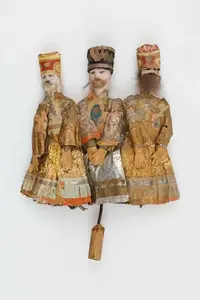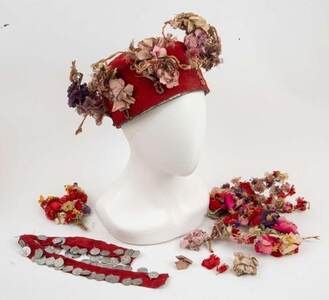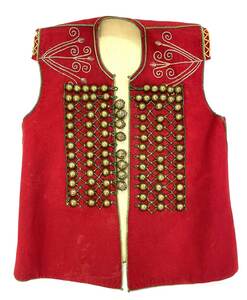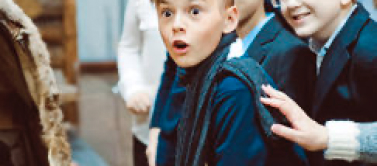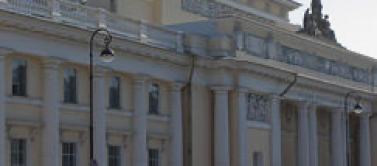Collections on the culture of the peoples of Belarus, Ukraine, Moldova
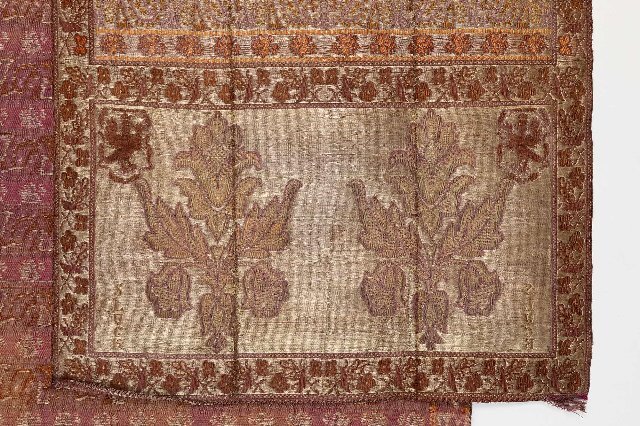
The collection on the culture of Ukrainians, Belarusians, Moldovans, Ashkenazi Jews, Gagauz, Bessarabian Bulgarians and Gypsies, as well as the peoples of Central and Southern Europe - Czechs, Slovaks and Poles, Bulgarians, Serbs, Croats, Slovenes, Montenegrins, Macedonians, Albanians, Hungarians and Romanians, characterizing the material and spiritual traditions of these ethnic groups The museum, which mainly dates back to the 19th-20th centuries, has over 42,000 exhibits.
By its nature, the collections of the department are extremely diverse, they reflect almost all aspects of the material and spiritual culture of Ukrainians, Belarusians, Moldovans and other peoples. Most of the ethnographic collection of the department represents the folk peasant culture. The funds of the department contain agricultural implements; items of cattle breeding, hunting, fishing, and beekeeping; works of potters, coopers, shoemakers and tanners. The collections of tools for fiber processing and weaving are complete and integral. Oversized vehicles, rare in a museum collection, handicraft furniture, painted and carved chests are of particular interest. The funds of the department include a valuable collection of textiles (garments, costume complexes, towels, tablecloths, carpets), as well as a collection of various jewelry. Both traditional and modern goods made of wood, metal, textiles, glass and paper, as well as ceramics represent Ukrainian, Belarusian and Moldovan folk art and crafts in a complete manner.
The first collectors, the first collection
The first exhibits in the department's collection were Ukrainian embroideries, towels and women's clothing items obtained from the artist K. Dalmatov and items from the All-Russian Handicraft and Industrial Exhibition held in 1902 in St. Petersburg. These were fishing implements, utensils, clothes, and embroidery made by Belarusian peasants.
The specialists in the field of Slavic and Romance ethnography F. Volkov, I. Zaretsky, N. Mogilyansky, E. Romanov, A. Sergutovsky, K. Sherotsky, P. Efimenko. E. Lyatsky, A. Miller, etc. were the first collectors of item and illustrative collections on the culture of Belarusians, Ukrainians, Moldovans, Ashkenazi Jews, Bessarabian Bulgarians and Gagauz. The involvement of local amateur historians, as well as students of St. Petersburg University, in the collection of materials was also very fruitful. L. Niderle and M. Madenitsa laid the basis of collections on foreign peoples.
Features and concepts of collecting activity in historical periods
1. 1902-1913 – the pre-revolutionary period, the formation of the main fund. Experts of the museum scientifically thought out the expedition and collecting activities of the department of this period and carried it based on specially published "Program for collecting ethnographic objects". Amateur local historians were actively involved in collecting: the national teacher P. Ryabkov, the director of the Verkhne-Saltovsky College V. Babenko, the artist A. Vysotsky, the resident of Chisinau P. Shumansky, the students of St. Petersburg University N. Kirmikchi and V. Kostko. A special role belonged to S. Ansky (Sh. Z. Rappoport), whose unique collection gives an idea of the traditional culture of Shtetls (Jewish towns) in 19th-century Russia.
2. 1923-1940 – trips as part of expeditions to Ukraine, Belarus and Moldova. Since the late 1920s, cultural and educational work has become prevalent in the activities of the museum staff. A significant reduction in the collection of exhibits took place. At the same time, A. Zarembsky, B. Kryzhanovsky, M. Fride, A. Kolakovskaya, A. Duisburg, G. Bonch-Osmolovsky, I. Pulner, A. Danilina conducted expeditions in order to obtain items on the culture of Ukrainians, Belarusians, Jews and Moldovans that are missing from the collection.
3. 1946-1960 – the post-war period of collecting ethnographic exhibits and handicrafts. A. Bezhkovich, N. Khazova, S. Avizhanskaya and Z. Predtechenskaya conducted a significant work on the acquisition of funds of the department. In 1948, materials from the First All-Russian Ethnographic Exhibition of 1867 joined the funds of the museum and the department. They included Slavic collections, in assembly of which M. Raevskaya (1811-1884) and representatives of the Illyrian, Serbian and Slovenian Matica actively participated. In 1953, the department's funds received artifacts from the Museum of Gifts to I. Stalin, established in the post-war period with the gifts of the working people of socialist countries.
4. 1960-1980 – purposeful trips, work on programs in complex expeditions. In this period, the collection of exhibits on traditional ethnography and the acquisition of the department's funds with modern objects took place. The collectors were L. Zyazeva, Z. Predchetenskaya, L. Fotiy, N. Khazova, I. Maximova, N. Kalashnikova, L. Myshastaya (Bogdanova), E. Timofeeva, E. Kononova, L.B. Uritskaya, I. Shangina, O. Karpova, O. Lysenko, N. Cherunova. During these years, gifts from museums and individual citizens of socialist countries, as well as items from temporary exhibitions enriched the department’s collection.
5. 1980-1990 – expeditions and business trips in order to fill gaps in the collection. The collections were conducted by N. Kalashnikova, O. Karpova, O. Lysenko. In addition, the funds received items purchased from collectors (D. Goberman, etc.), as gifts and from institutional bodies.
6. 1990-2022 – business trips and expeditions on grants to Belarus, Moldova and Crimea. The staff of the department (O. Lysenko, V. Gavrishina, A. Mikhailova, N. Kalashnikova, L. Ganina, E, Dyakova, V. Baranova, K. Smurova) took part in these trips for scientific purposes. The funds became slightly bigger, mainly due to gifts.
The scientific value of the collection
The collection of the Department of Ethnography of Eastern, Southeastern and Central Europe is certainly valuable, as it contains cultural and everyday objects unique in their early dating, comprehensively reflecting the ethnic diversity of the region. Besides, many of the department's exhibits are articles of the 18th-19th centuries, samples of festive and ceremonial clothing of the 19th-20th centuries, funeral merchandise, Ukrainian ceramics, Belarusian nativity scene, objects of Jewish religious rites, Gagauz pumpkin articles, etc. These articles are of high scientific and artistic value, genuine masterpieces of folk art.

